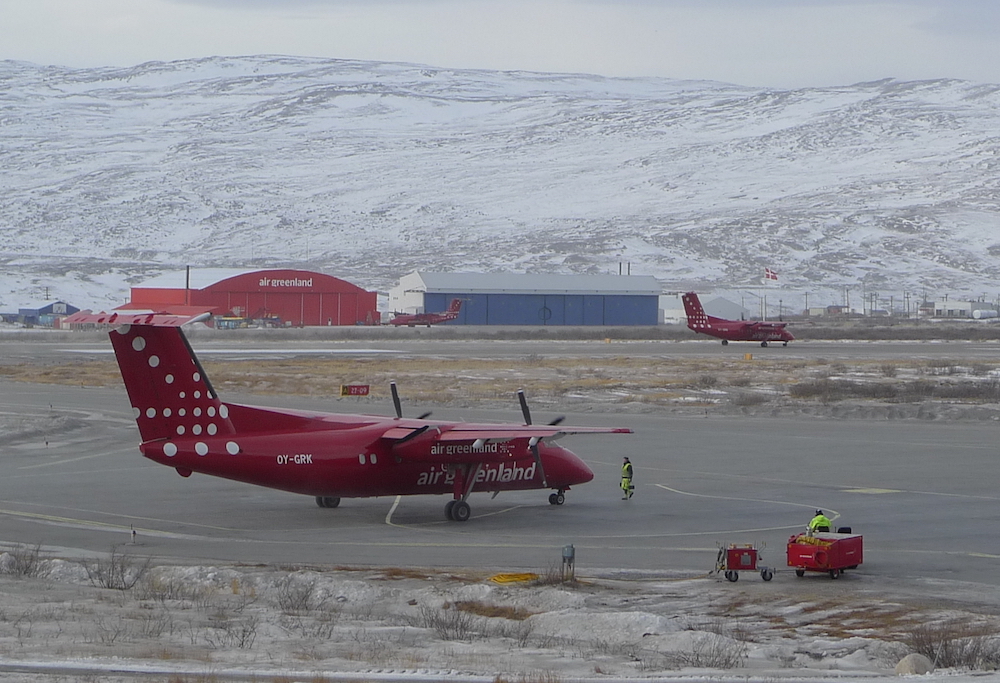Despite improving COVID-19 situations, airlines in Iceland and Greenland face a ‘painful’ outlook
Uncertainty about summer travel to Greenland and Iceland is adding to woes over grounded flights and reduced demand caused by the coronavirus pandemic.

Despite what appear to be improving COVID-19 outlooks in Iceland and Greenland, uncertainty about travel restrictions in and out of the two countries is spelling trouble for their flag carriers.
Greenland reported on Wednesday that all 11 cases of COVID-19 registered in that country were now considered to be recovered. Nevertheless, a ban on air travel there will remain in place until April 30, including domestic flights.
The ban has been in effect since March 21, and extending it is intended to ensure that no new infected individuals arrive in Greenland and that individuals who arrived in the final days before it came into effect do not travel internally, potentially spreading the virus unwittingly.
Jacob Nitter Sørensen, the managing director of Air Greenland, said that even though the extension had been expected, it will be “very, very painful” for the airline.
[Nuuk is sealed off after a second COVID-19 case is confirmed]
Air Greenland, a nationally controlled firm, is earning some money by operating transport flights for public health authorities; that will keep up for the duration, but without its commercial operations, the vast majority of the airline’s income has been wiped out until at least the end of the month, Sørensen told KNR.
Uncertainty about further extensions, he said, was now beginning to result in potential passengers holding off booking summer travel.
“That’s hard for the firm right now,” Sørensen said.
Air Greenland has sought to cut some of its losses by temporarily withholding up to half the pay of its 540 employees in April. The measure had the backing of staff, and Sørensen reckons it can be repeated again in May.
[Finnair cancels all flights to northern Lapland]
Iceland, meanwhile, is likely to be left with only a minimal number of flight connections to the outside world after April 15, as an agreement between that country’s government and Icelandair to operate repatriation flights is set to come to an end without any plans for a renewal in place.
Prior to its initial reductions in the number of its departures on March 12, Icelandair was operating about 1,700 flights per month. Under a deal with the transport ministry struck on March 28 that intentionally limits the number of arrivals in Iceland, Icelandair agreed to operate at least six flights during a three-week period to each of three destinations, Stockholm, Boston and London, in exchange for 100 million króna ($10 million) in government-sponsored loans.
The arrangement was put in place to ensure that Icelanders abroad could return home, and that foreigners in Iceland could leave the island.
A statement issued by the foreign ministry on April 6 said that even though the arrangement was not being renewed, the borders were remaining open. It warned, however, that it could not guarantee that Icelandair flights, or connecting flights to airports where Icelandair is departing from, would be available.
“Air transport will not completely fall off after April 15, but it is still unclear what it will be like,” the statement said.
[Alaska’s North Slope Borough seizes RavnAir assets, setting up bankruptcy fight]
The announcement came as Icelandair announced that passenger traffic had fallen 54 percent in March on the back of gradual capacity reductions beginning mid-month amid declining demand. Guidance issued by the firm predicts that demand this summer will be down by more than a quarter.
Meanwhile, public health authorities said Wednesday that they plan to gradually relax social distancing measures starting on May 4.
Speaking during a press conference, Iceland’s chief epidemiologist said the number of new COVID-19 infections had fallen to their lowest levels in two weeks, making it likely the country would reach peak infection around April 10, as had been forecast last month.
On April 7, 30 new cases of COVID-19 were confirmed, but an additional 75 people were reported as recovered, marking the second day running that recoveries outnumbered new infections, even as the number of daily tests remained at high levels.
“I think we can pretty much say we have reached the peak,” Guðnason said.